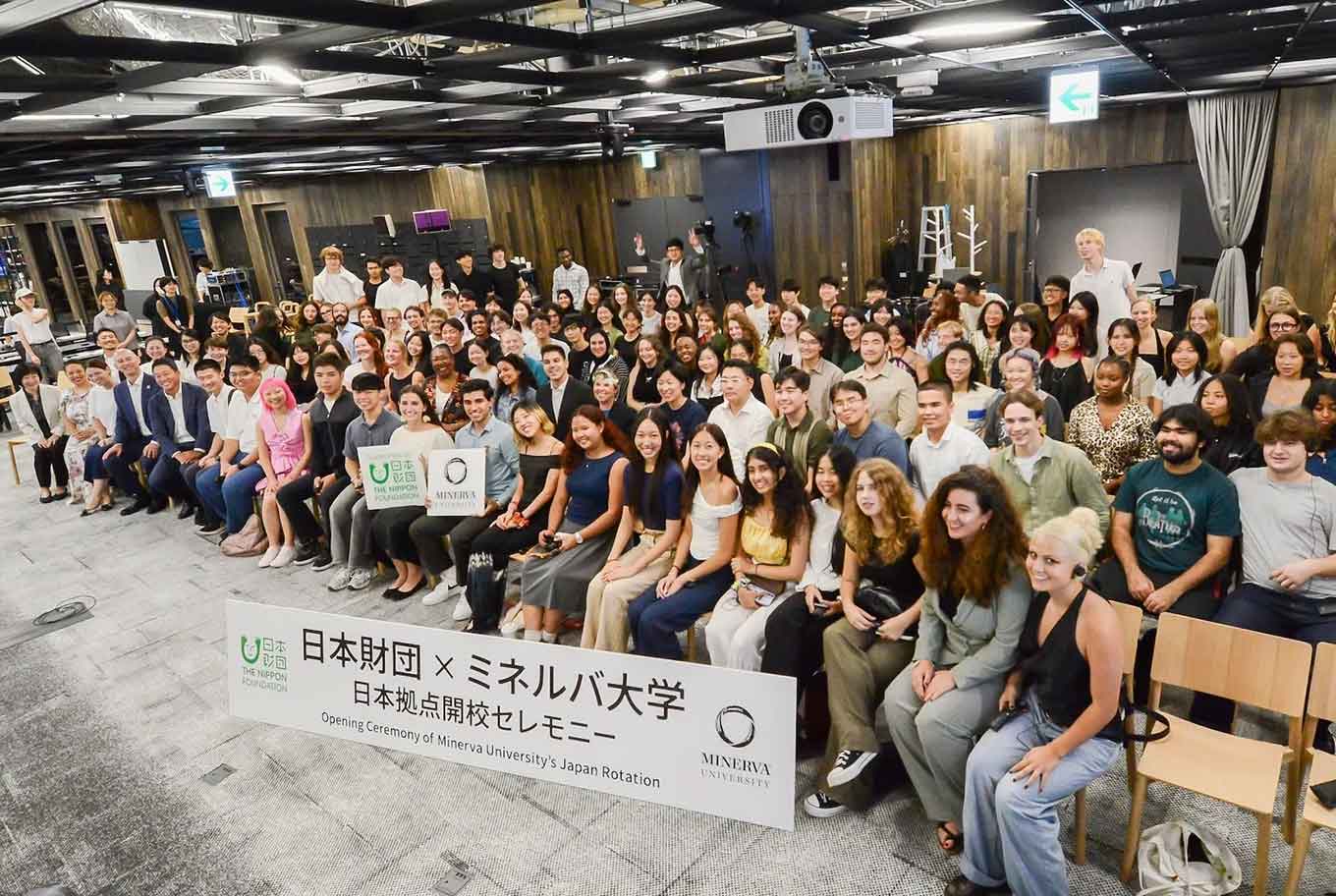Completion Ceremony Held for Comprehensive Infectious Disease Education and Research Facility at University of OsakaAiming to become leading infectious disease research center focusing on basic research and research integrating various fields
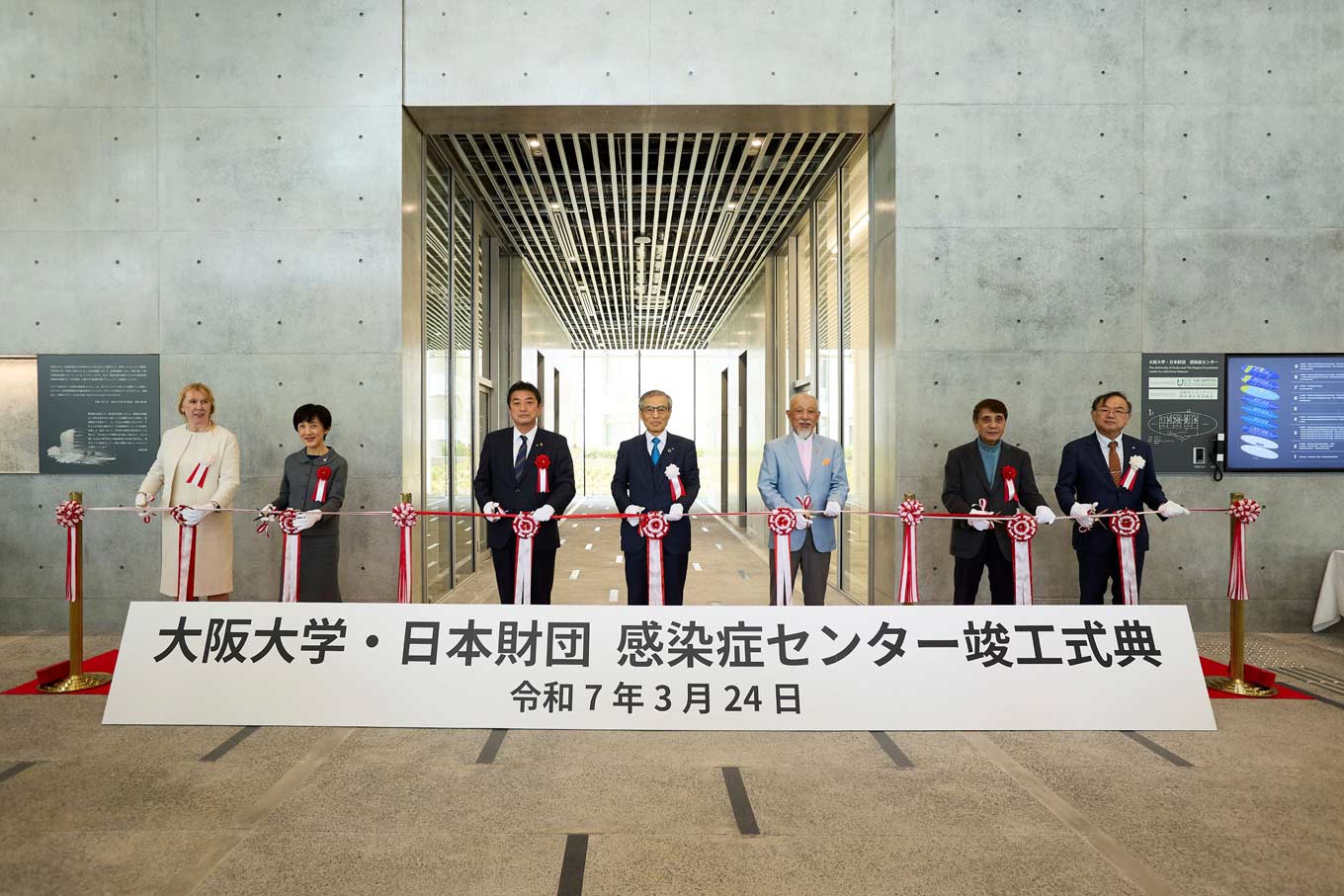
A ceremony was held on March 24, 2025, at the University of Osaka’s Suita Campus to mark the completion of the UOsaka and Nippon Foundation Center for Infectious Disease Education and Research. The center was built as part of The Nippon Foundation – Osaka University Infectious Disease Response Project, jointly launched by The Nippon Foundation and the University of Osaka in 2021. The 10-story building, designed by world-renowned architect Tadao Ando, is Japan’s largest infectious disease research facility.
The ceremony was attended by roughly 100 people including former University of Osaka President Shojiro Nishio, Fuchu City (Tokyo) Mayor and Representative Director of the Japan Motorboat Racing Association Norio Takano, Mr. Ando, and people associated with the Ministry of Education, Culture, Sports, Science and Technology. Before the ceremony, members of the media received a tour of the facility and a presentation introducing the University of Osaka’s Center for Infectious Disease Education and Research (CiDER), which will carry out the facility’s teaching and research.

Features of the University of Osaka and Nippon Foundation Center for Infectious Disease Education and Research
| Design concept | Elliptical shape to convey an image of “Spaceship Earth,” with a futuristic design using aluminum cast-metal louvers |
| Environmental considerations | The building is ZEB Ready,* using various methods to conserve energy including the use of high-efficiency equipment for shade from the sun’s rays and CO2 density controls to reduce environmental impact. |
| Research facility | Japan’s largest infectious disease research facility covering approximately 17,619 square meters over 10 stories above ground |
| Joint creation space | A 3-story atrium from the 7th to 9th floors, called the Co-Creation Deck, promotes interaction among researchers |
| Common-use laboratory | A common-use laboratory on the 7th floor features the latest research equipment, which can analyze infected cells and immune cells at the single-cell level |
- ZEB Ready: Designation from Japan’s Ministry of the Environment indicating that a building reduces energy consumption by at least 50% compared with a conventional building (ZEB: [net] zero energy building).
Speakers’ Comments
Shojiro Nishio, former (to March 2025) President of the University of Osaka
As a hub for comprehensive knowledge on infectious diseases, we will bring together researchers across academic boundaries from around the world to apply total learning as an international leader in research related to infectious disease.
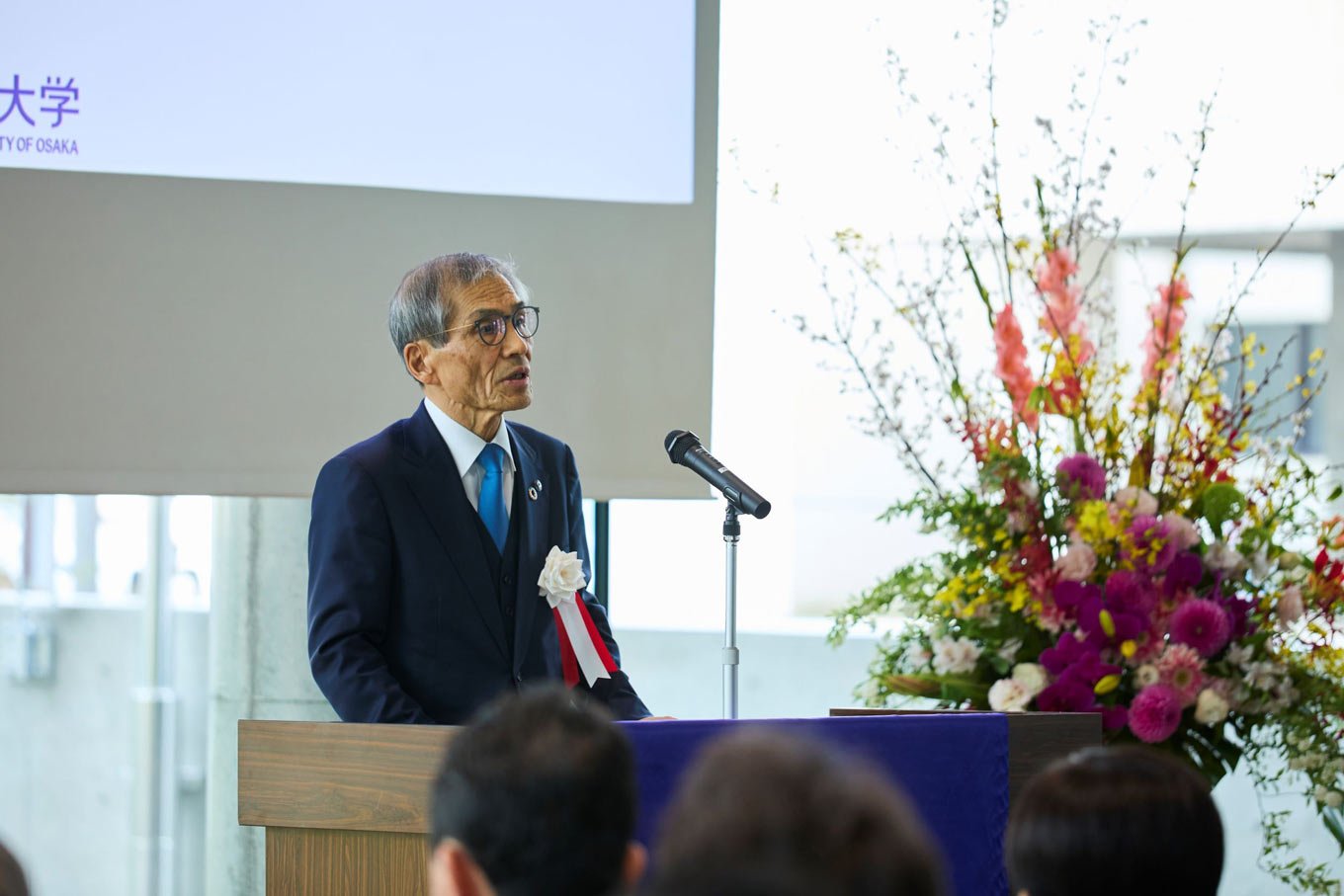
Yohei Sasakawa, Chairman of The Nippon Foundation
As the world’s leading research center for infectious disease, I hope that this center, which can actively promote human health, will play a leading role in infectious disease research globally by preparing for possible pandemics in the future and protecting people’s lives and livelihoods.
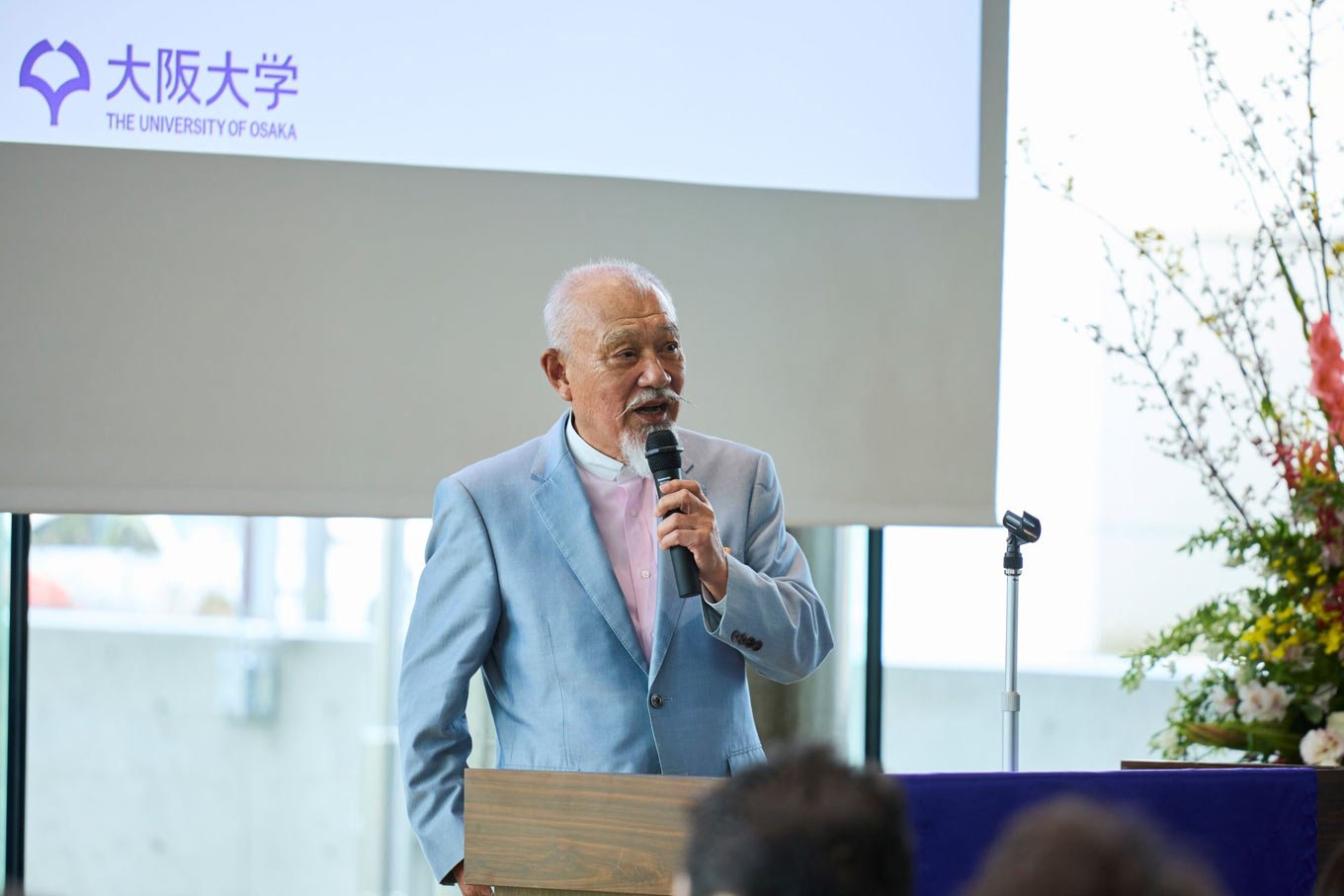
Tadao Ando
We designed the building with a community space created by an atrium from the 7th to 9th floors, so that researchers from around the world can visit and work together in all languages. Now that the building is complete, I have high hopes for its research activities.
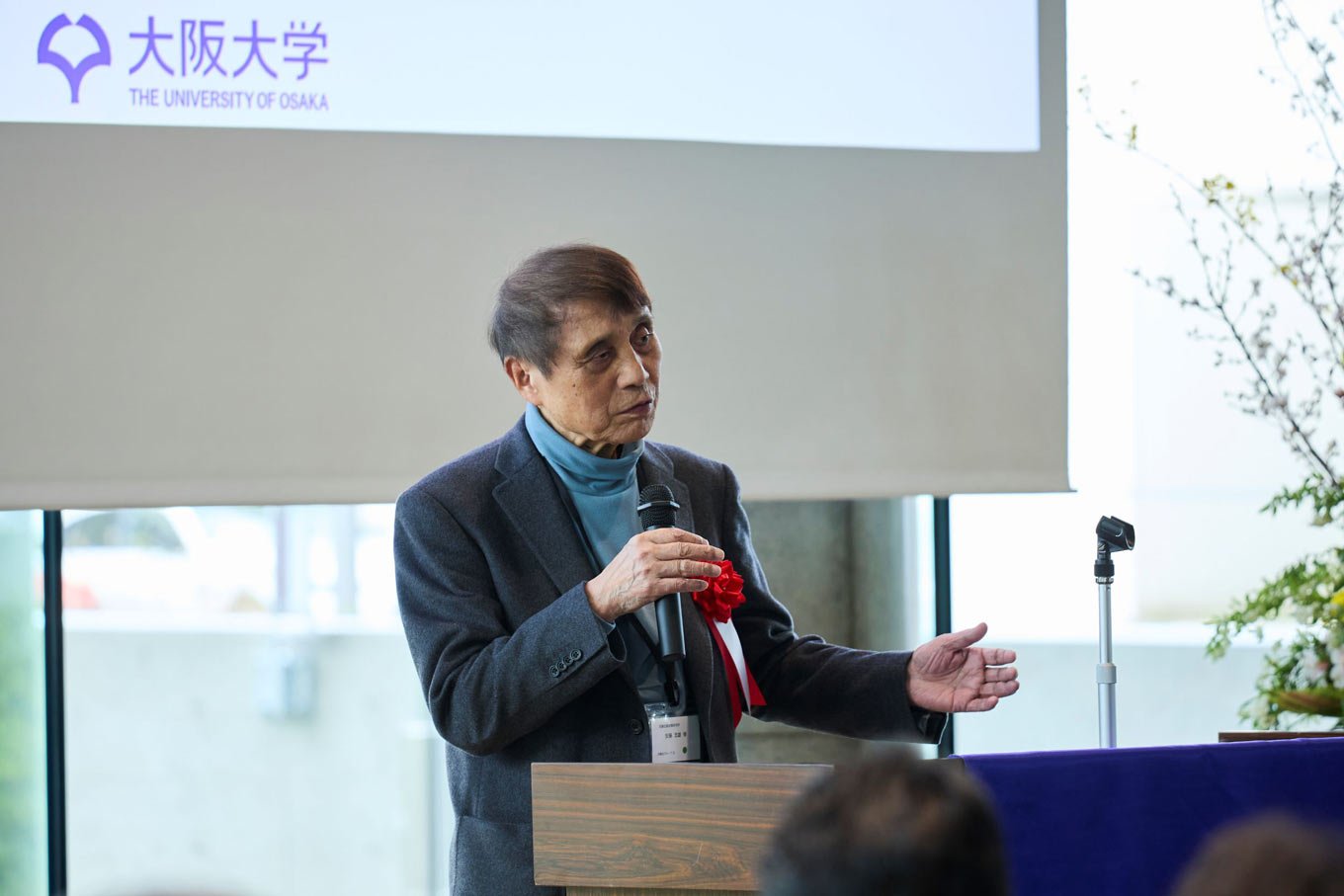
Related News
Contact
Global Communications Team
The Nippon Foundation
- E-mail: info_global_communication@ps.nippon-foundation.or.jp


